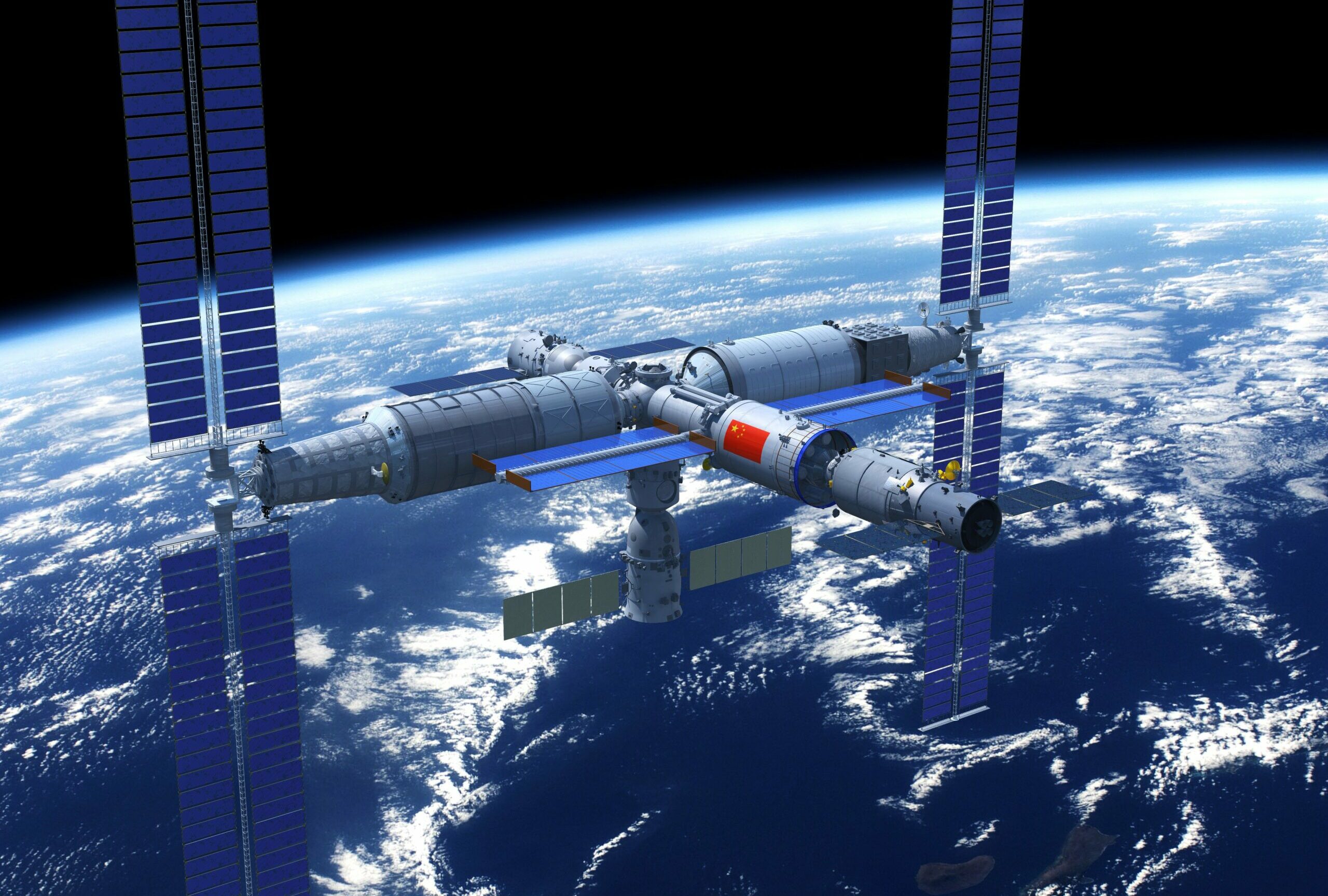Here’s how Beijing will double the Chinese space station

China plans to expand its space station from 3 to 6 modules in the next few years. Beijing will offer astronauts from other nations an alternative platform to the International Space Station (ISS) led by NASA which is approaching the end of its operations (set for 2030)
China will send new modules to China's Tiangong space station in the coming years to expand the outpost's volume and capabilities.
At the 47th International Astronautical Congress in Baku on October 4, Zhang Qiao of the Chinese Academy of Space Technology (CAST) presented future plans for Tiangong
In April 2021, China began construction of the three-module Tiangong (Heavenly Palace in Chinese) space station with the launch of the Tianhe module, the main accommodation for astronauts. It has been fully operational since the end of 2022 and hosts up to three astronauts at a maximum orbital altitude of 450 km.
Now Beijing has announced that it intends to extend the outpost from three to six modules. An expanded Tiangong would have just over a third of the mass of the International Space Station (ISS). With a lifespan of more than 15 years, Tiangong may one day find itself the only space station still in operation as the Space Station's operational deadline is set for 2030.
All the details.
FUTURE PLANS FOR TIANGONG
“In the future, we will build a group of six 180-ton modules,” Zhang said. Tiangong currently has three modules, each with a mass of about 22 tons.
To enable this expansion, a multifunctional expansion module with six docking ports will be launched for the first time in the coming years. This will dock at the front door of the Tianhe main module. Full-scale modules can then be added to Tiangong, SpaceNews explains.
The station will be constantly manned by rotating teams of three astronauts, who will conduct scientific experiments and help test new technologies.
THE COMPARISON WITH THE ISS
Weighing 180 tonnes after its expansion to six modules, Tiangong still represents only 40% of the mass of the ISS, which can accommodate a crew of seven astronauts, Reuters points out.
However, the ISS, which has been in orbit for more than two decades, will end its operational life in 2030, around the same time that China has said it expects to become "a great space power".
THE SPATIAL AIMS OF XI JINPING
The station is one of the flagships of Beijing's ambitious space program.
Under President Xi Jinping, Asia's largest economy has stepped up efforts to match the United States as the dominant power in space.
The growing scope of China's space activities reflects a clear increase in resources for the space sector, but can also create potential logistical, technical or budgetary challenges, notes Spacenews .
As Reuters points out, Tiangong has become an emblem of China's growing weight and confidence in its space efforts, and a challenger to the United States in the space after being isolated from the ISS. Any collaboration, direct or indirect, with NASA is prohibited by US law.
But in a blow to China's aspirations for space diplomacy, the European Space Agency (ESA) said this year it did not have the financial or "political" green light to attend Tiangong, shelving a years-long plan for a visit of European astronauts, Reuters recalls again.
Russia, which participates in the ISS, has similar space diplomacy plans, suggesting that Moscow's partners in the BRICS group – Brazil, India, China and South Africa – could build a module for its space station. Roscosmos, the Russian space agency, said last year that it wanted to build a space station made up of six modules that could accommodate up to four cosmonauts.
This is a machine translation from Italian language of a post published on Start Magazine at the URL https://www.startmag.it/innovazione/ecco-come-pechino-raddoppiera-la-stazione-spaziale-cinese/ on Sun, 08 Oct 2023 06:38:04 +0000.
